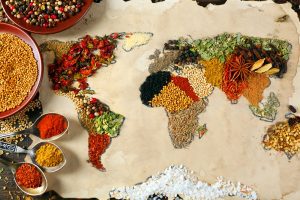Introduction
In our increasingly interconnected world, the journey of food from farm to table often transcends international borders. While this global exchange of culinary delights offers a rich tapestry of flavors, it also presents a formidable challenge – harmonizing food safety standards across different nations and cultures. In this article, we delve into the complexities of aligning international food safety standards and the crucial role it plays in safeguarding the global gastronomy.
The Diversity of Global Gastronomy
Global gastronomy is a vibrant celebration of diverse cuisines, ingredients, and cooking techniques. It allows us to savor exotic dishes from distant corners of the world without leaving our own kitchens. Yet, this diversity is also a significant factor contributing to the complexity of international food safety standards.

The Importance of Food Safety
Food safety is paramount. Ensuring that food is safe to eat, regardless of its origin, is a fundamental responsibility. It safeguards the health and well-being of consumers and upholds the integrity of the global food supply.
The Challenge of Harmonization
Harmonizing international food safety standards is an intricate puzzle. It involves reconciling different regulatory systems, inspection procedures, and cultural practices, all while ensuring that the safety of food is not compromised.
Cultural Practices and Traditions
Cultural practices and traditions heavily influence how food is prepared, handled, and consumed. These practices often vary significantly from one culture to another, making it challenging to establish universal food safety guidelines.
Regulatory Frameworks
Each country maintains its own regulatory framework for food safety, designed to cater to its unique food landscape. Harmonization requires bridging these frameworks, which may differ in terms of standards, requirements, and enforcement mechanisms.
Economic and Trade Considerations
International trade in food products is a driving force behind harmonization efforts. Different countries’ food safety standards can act as trade barriers, hindering the global exchange of goods.
The Role of International Organizations
International organizations, such as the World Health Organization (WHO) and the Food and Agriculture Organization (FAO), play a pivotal role in harmonizing food safety standards. They facilitate dialogue and the development of guidelines to promote global food safety.
Challenges in Harmonization
Harmonizing food safety standards faces numerous challenges. These encompass linguistic barriers, the need for technical expertise, and navigating the intricacies of different legal systems.
Linguistic Barriers
Language can be a significant barrier to harmonization. Ensuring that food safety guidelines are accurately translated and understood in all participating countries is vital.
Technical Expertise
Harmonization often requires a deep understanding of scientific and technical aspects of food safety. Access to experts who can contribute to the harmonization process is crucial.
Legal and Regulatory Complexities
Each country’s legal system can introduce complexities. Harmonizing standards may require amendments to domestic laws and regulations, which can be a protracted process.
The Way Forward
Harmonizing international food safety standards is not without its challenges, but it is essential. It safeguards public health, facilitates international trade, and promotes the global exchange of culinary traditions.
The Role of Science and Technology
Advancements in science and technology can simplify the harmonization process. Techniques such as blockchain and DNA barcoding provide transparency in the food supply chain, making it easier to trace and verify food safety.
The Power of Education
Education and awareness are fundamental. Teaching consumers, food producers, and policymakers about the importance of food safety can create a culture of vigilance and adherence to standards.
Collaboration and Multilateral Diplomacy
Collaboration between nations is key. Multilateral diplomacy fosters dialogue, mutual understanding, and the establishment of consensus on food safety standards.

Conclusion
The challenge of bridging international food safety standards is formidable, but it is a journey worth embarking on. As global gastronomy continues to flourish, ensuring the safety of the food we savor from around the world is not merely a matter of convenience; it is a matter of safeguarding our health, preserving culinary traditions, and fostering international cooperation. Through science, education, and collaborative diplomacy, we can work together to harmonize these standards and continue to enjoy the delights of global gastronomy safely and confidently.












